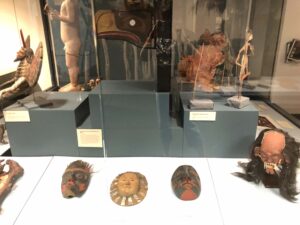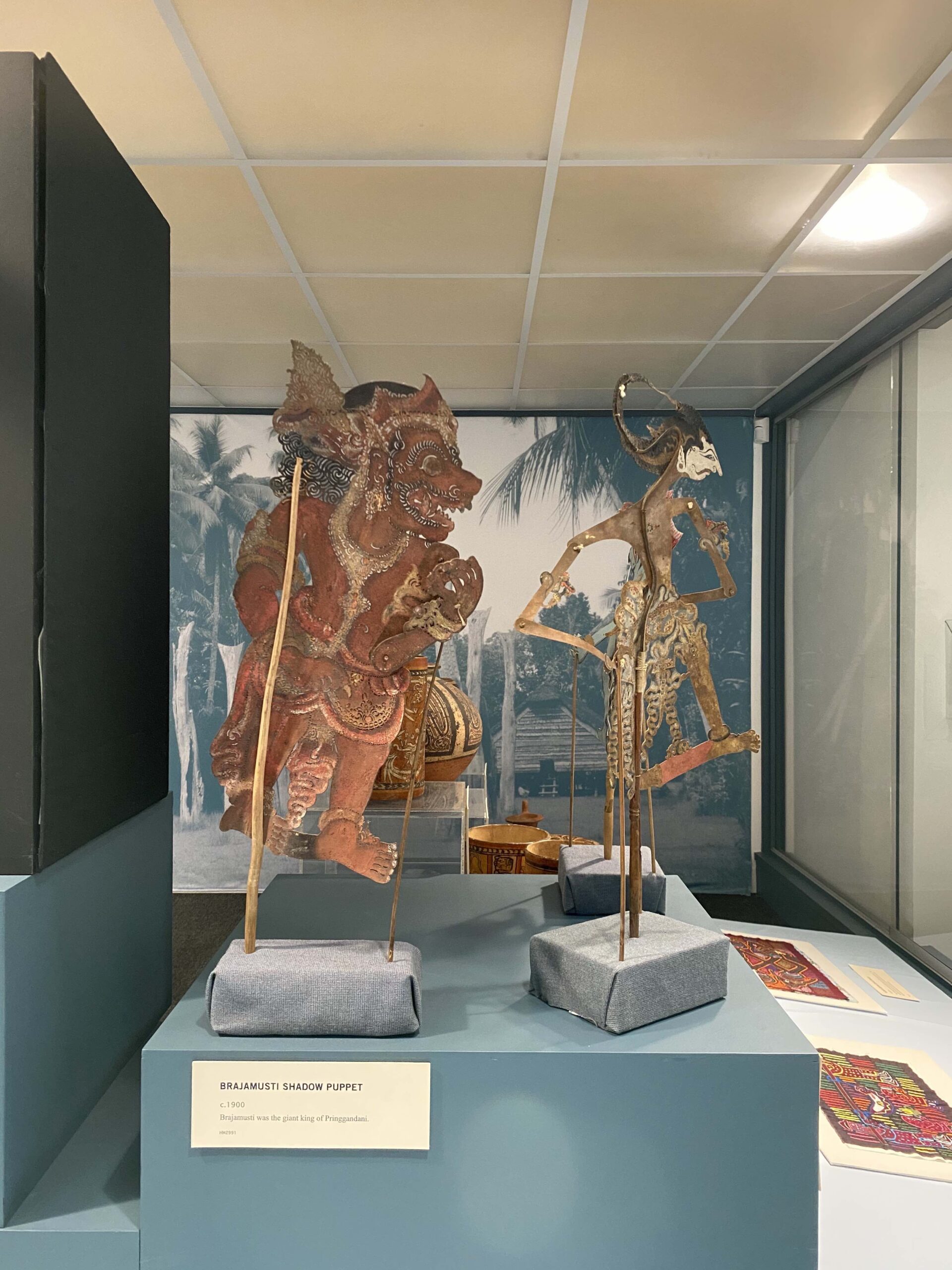Activity 3 – Belief
Most cultures in the world, both past and current day, have beliefs about the how the world works. Rituals and stories are ways we express and teach these beliefs. These rituals and stories are often accompanied by the creation and utilization of masks.

Every mask has a story behind it and a reason why it was created. For example, the three masks in the center of this picture are from the Northwest Coast of the United States. They depict characters from stories important to Northwest Coast cultures and help to illustrate these stories.
The “whistling” black mask on the left represents the tale of the Old Woman of the Forest who was said to eat young children who wandered into the wilds alone. She is described as an old woman with long, scraggly hair. Does this story sound familiar? Many cultures had stories designed to teach children not to do dangerous things like wander off into the woods alone.
The sun mask in the middle represents the myth of the Raven stealing the sun. This story explains how the sun, moon, and stars were placed in the heavens.
Some masks were for more than simply communicating stories. On the right is a Rangda mask from the island of Bali in Indonesia. Rangada is an old woman with scraggly hair who eats children. The Balinese people believe masks such as this one transform their wearers. They use these masks in elaborate rituals to symbolically represent the battle between good and evil.

Anthropologists study artifacts and objects tied to belief like the masks above or these shadow puppets to the right. A special storyteller called a dalang uses the puppets to tell stories. They move the puppets between a light and a screen, casting moving shadows which the audience can see. This kind of storytelling is called wayang and is found on the island of Java in Indonesia.
Studying belief, rituals, and storytelling can help anthropologists better understand the values and ideas of a culture. It is not unusual for two cultures to have similar stories. (Did you notice similar characters from different places in the mask discussion above?) This can be because people or ideas moved between the two cultures, or because both cultures had a similar – if unrelated – approach to understanding a complex problem (like why there’s a great big bright ball of fire in the sky every day). Identifying similarities and differences among the stories and beliefs of different cultures allows anthropologists to better understand humans as a whole.
Activity Time!
Give it a try yourself! Look at the Belief section in your Research Notes for your task. For inspiration, you can explore the masks in the Hudson Museum Online Collections database!
